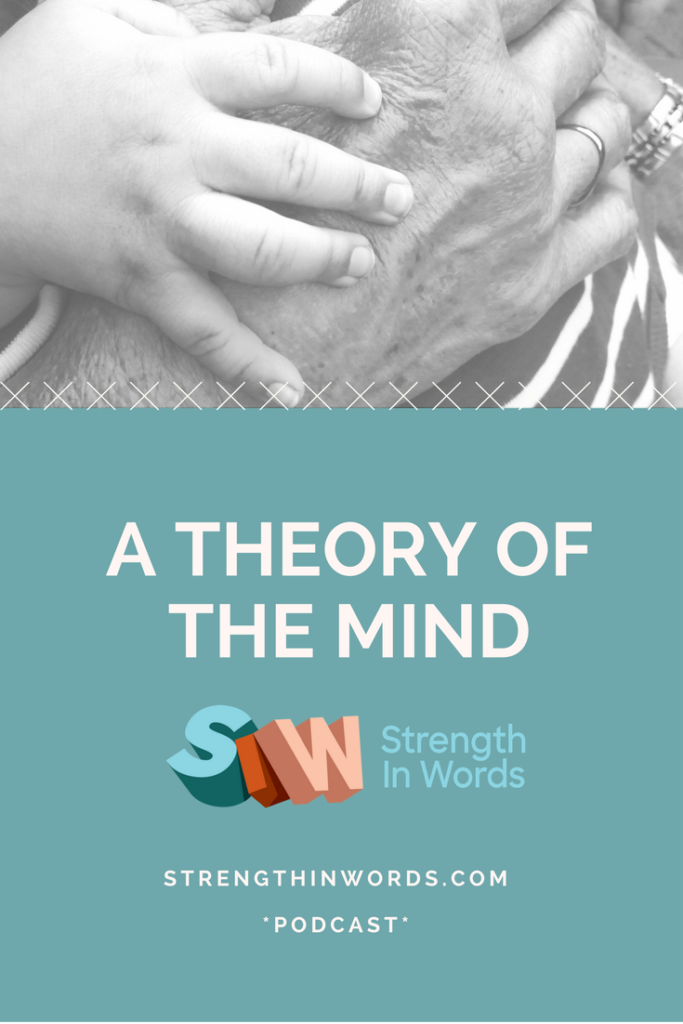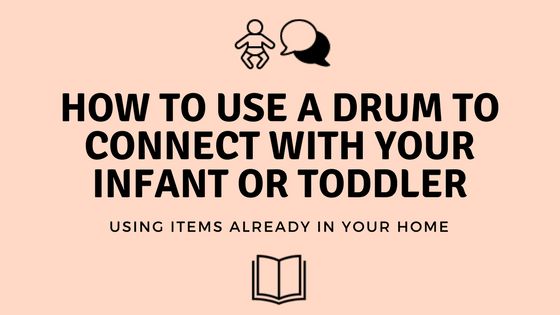We all struggle to see from another’s perspective. Believe it or not, we start learning that ability in infancy!

On this episode of Learn With Less, Ayelet explores the ways infants and toddlers learn to develop emotional intelligence and the ability to take another’s perspective.
Below is the transcript of this week’s “Developmental Thought,” an excerpt from the full episode.
For additional information, music, play ideas and the complete interactive family experience, please listen to the entire episode.
Emotional language, which we’ve discussed in previous episodes such as “Labelling Emotions,” is extremely beneficial for young children not only in their development of social/emotional abilities, but also in their development of what’s called “social cognition.”
This is an area of early development that extends into the rest of our lives, and as you may guess, it has to do with social and emotional understanding as well as intelligence, or what we sometimes refer to as “emotional intelligence.”
>>Don’t Miss Our Corresponding Blog Post!<<
Taking Another’s Perspective
A big part of this area of development focuses on a term known as “theory of mind,” which encompasses many skills and develops over time in the first five years of life. Essentially, theory of mind is the ability to take another’s perspective, and to understand that not everyone shares the same thoughts, ideas, and feelings as you do.
There is a fairly clear progression of abilities that help a child to form their emerging understanding of theory of mind, and, again, it develops over time over the first 5 years. Imitation, sharing, testing behaviors, empathy, pretend play – these are all part of the development of theory of mind, and are all skills and abilities that take time and develop in “layers,” as my guest Megan Lingo so beautifully stated in last week’s episode, “Wordless Picture Books.”
I think it’s so important to remember that infant and toddler learning doesn’t happen overnight – we see these big skills like walking and talking “happen” one day, and we tend to focus on the “day our child accomplished something” instead of the many, many steps and experiments and failures and learning moments that formed the ability to successfully accomplish that task.
Attend and Imitate
One of the skills that goes into the development of “theory of mind,” is the ability to pay attention to others and imitate them. A young infant is already imitative in certain ways, often watching a caregiver’s mouth and extremities for information that will be integrated and made meaning of over a series of interactions that inform her about the way the world works.
This is why people often enjoy building in routines or rituals from early on, and why interaction, consistency, and repetition with variation are all so integral for a young child’s brain development – it informs the infant about communication, feelings, movement, patterns, etc.
Emotional Language
We spoke briefly about the ability to recognize and talk about emotions, and use emotional language to describe what our children and others around us are feeling, whether that’s positive, negative, or associated with specific needs such as food, drink or sleep.
Using emotional language builds our young child’s abilities to identify her own emotions, eventually building skills to regulate those emotions, and also helps her learn to recognize that other people may feel differently than she does at a particular moment.
A good time to do this might be at the playground or in a play group, when your child or another child snatches a toy. Pointing out how that affected the child who lost the toy can be a wonderful way to visually identify behaviors that are linked to actions – part of cause and effect – and also to make these moments of loss and difficulty into learning lessons.
“Consistency” Experiments
This, of course, is also related to understanding the causes and consequences of actions and emotions. When your little one throws her toy, she may look at your face to gauge your response. This can invoke a whole host of emotional responses from us, including, “oh my god, my child is a terror! She did that on purpose just to see what I’d do!” Well, yes! And no.
Your toddler’s testing of the waters is not an indication, of course, that she’s bound to become a serial killer! No, it simply indicates that she’s looking for a consistent response on your end, and even more simply, she wants to experiment with how her actions affect the world and those in it.
Integration
Another part of early development of theory of mind is the knowledge that people are motivated by the things that they desire… and that there is a rationale for actions we make. Even older infants are often able to link the fact that when we walk toward the light switch, the desired action is to turn on the light. This “putting together” of what we want and how we’ll get it is a very cool aspect of the integration of what young children see and hear and how they realize we think.
Older toddlers often start to enact or reenact whole series of events that they’ve witnessed or been engaged in themselves, but from another’s perspective – pretend play is a great example of this, and when we see our toddlers “becoming” the doctor or the mama or even the pet (who wants to be walked, or fed, or brushed), we can be impressed by their experimentation with what it feels like to take another’s perspective.
Support Emerging Skills
It’s not until an older age (more like 4 or 5 years) that children really start to integrate and think about what others might be feeling and thinking (vs. a toddler experimenting with what this might be like or look like). This is why toddlers might be “able” to or interested in sharing every once in a while, but likely not all the time, and why empathy might be visible sometimes, but not all the time.
These are emerging skills in our little ones. They develop over time, as we said earlier, in layers of understanding, and we cannot force this progression. What we can do is to support it. With play, with meaningful and rich interactions, with language, with consistently modeled behaviors from us, and with love.

